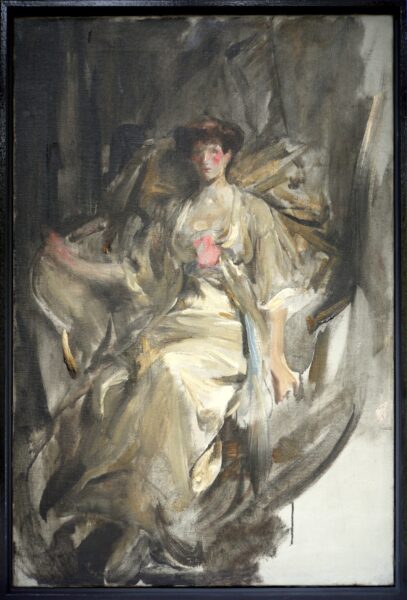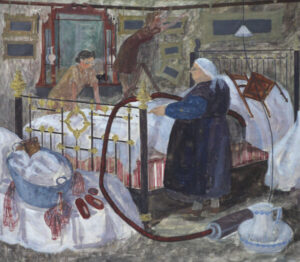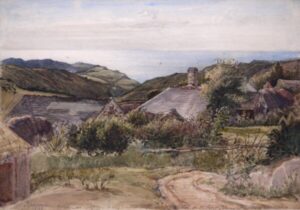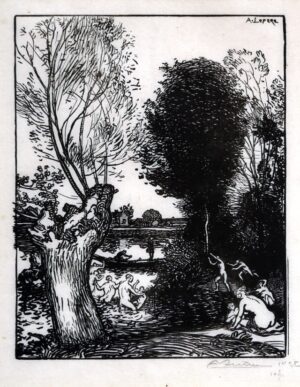Description
A beautiful study by the acclaimed artist Sir James Jebusa Shannon R.A. The painting is a preliminary sketch for the finished work as can be seen in the black and white photo from the archive at the Courtauld Institute in London. The painting depicts “Mrs. Stuart Clarke”, a lady of High Society from the Edwardian Period.
As a Portraitist, Shannon only began to be taken seriously as a result of two paintings shown at the Grosvenor Gallery in 1888. One of the portraits was a full- length portrait of Henry Vigne, the distinguished ninety-year-old in hunting attire, riding crop in hand.
The portrait later earned Shannon the status of hors concours when it was shown at the Paris Exposition Universelle in 1889. The second painting, Myrrah (unlocated) is reported to have piqued the attention of Lady Violet Manners (later the Marchioness of Granby and the future Duchess of Rutland), who paid a visit to Shannon’s studio, thus inaugurating three decades of her family’s patronage of the artist. With Violet Manners’ support, Shannon’s reputation as a portraitist was fully launched. The increasing number of commissions he received required more salubrious surroundings for his growing roster of high society clients and to that end, he took a larger space at the Alexandra Studios, Alfred Place, Kensington, located within comfortable walking distance of the Phillimore Gardens home that he shared with his wife, Florence (whom he married in 1886,) and their daughter Kitty (1887–1974). The rapidity with which Shannon’s career progressed is witnessed by his purchase of a highly desirable property in Holland Park Road, the site of the original Holland Park farmhouse and, what is more important, next door to Frederic, Lord Leighton (1830–1896), the estimable president of the Royal Academy.



